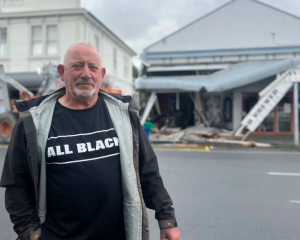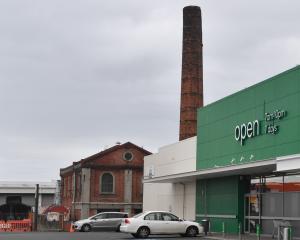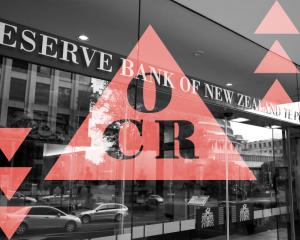More New Zealanders are making the switch to the super-fast 4G mobile network and as the coverage areas increase, the way we are using our smart devices is also changing.
Last week, 2degrees flicked the switch on its 4G mobile internet network in central Auckland with 72 sites going live, while Vodafone quietly launched 4G at Ohakune, Ruapehu, Cardrona Valley, Tukino, Franz Josef, and Fox Glacier ski fields.
During June Telecom switched on 4G sites in Dunedin, Queenstown, Wanaka, Masterton, Hutt Valley, Rotorua, Ohakune, Blenheim, Nelson, Rangiora, Rolleston, Lincoln, Hamner Springs, and extensions in Auckland, Wellington and Christchurch. 4G boasts speeds up to 10 times faster than standard 3G services, delivering theoretical data speeds of up to 150Mbps, but this varies depending on handset, location and load on the network.
To access 4G, mobile users need to be in a 4G coverage area serviced by their provider and have a 4G-capable phone, such as the newer models of Apple's iPhone, the 5S or 5C, Samsung's Galaxy S4 or S5, or an HTC One.
Vodafone consumer director Matt Williams says there are now more than 400,000 active 4G devices in their network and that number is expected to grow as more 4G devices hit the market.
"This year we boosted 4G capacity in central Auckland, allowing more 4G data users simultaneously to experience the fast mobile service, without performance degradation. This is a direct response to our customers' rapid adoption of the 4G service," Williams said.
2degrees chief executive Stewart Sherriff said its customers have been waiting patiently and their launch of 4G was slightly ahead of schedule.
"With the rise in connectivity and exploding demand for data services like video, music streaming, online access and mobile gaming, 4G is now an enabler that opens up a whole new world of opportunity for our customers," Sherriff said.
Telecom retail chief executive Chris Quin says more than a hundred additional 4G sites will go live before the end of the year, but added that the number of 'sites' measure doesn't clearly demonstrate Telecom's full capability as different types of cell sites have different coverage reach. Instead range and quality of coverage was the focus for the company.
"We think these faster speeds will quickly become the 'new normal' for New Zealanders, just as 3G speeds did when they were introduced a few years ago," Quin said.
Telecom says more than 60 per cent of its customer base uses a smartphone and that over the past year data use for the average customer had grown by 52 per cent.
Quin says a real change in behaviour is starting to emerge among mobile users.
"In particular, we're seeing a lot more uploading of data -- often driven by people posting photos or videos to social media to share their experiences with friends," he said.
Unsurprisingly, Vodafone's own customer insights echo similar changes to the way New Zealanders are using the mobiles.
Vodafone says its 4G users stream four times more content than 3G users and are more likely to make online purchases with their device.
Vodafone, Telecom and 2degrees all offer apps to customers that measure 4G data usage, so there are no nasty surprise bills if/when you chew through your data allotment.
Competition drives new mobile plans As New Zealand's smartphone addiction deepens, competition in the mobile space is heating up. Telcos are all launching increasingly innovative mobile plans as they seek to hang onto and gain new customers.
It's tough being a telco. According to IDC senior telecommunications analyst Glen Saunders, New Zealand's rugged terrain makes building mobile networks difficult while competition means investing sizeable amounts of money on networks is a must.
"Designing network solutions for growing data demand and meeting customer expectations for performance is driving further investment," Saunders said.
It's good news for consumers though as cheaper and more value packed plans keep being launched. Add to this number portability (being able to keep mobile numbers when swapping telcos) which has removed a barrier hindering competition. This has seen telcos adding as much value as possible in a bid to hang on to existing customers.
Adding further complexity in an already competitive market are the large number of prepaid customers. Because they're not tied into contracts, mobile operators have to stay especially sharp says Skinny general manager, Ross Parker.
"We only do prepay, and we don't have contracts, we always look after our existing customers because they're always free to leave," Parker said.
This has seen Skinny targeting talkers. Their $16 Big Value plan provides unlimited calling between Skinny customers. The $40 Big Talker plan offers unlimited calls/texts to Australasian landline and mobiles on all networks.
2degrees, who've long had rollover data and shared mobile data plans are also innovating. Their latest offering is a free SIM with 200MB of free mobile data per month. The offer is aimed at 3G or 4G tablet users wanting to use their tablet anywhere there's mobile coverage.
Vodafone's Red Share is designed to both acquire and retain customers says Matt Williams.
"We know that a lot of our customers have family members on Prepay plans or another provider, and more than half of consumers have decision input into someone else's plan so Red Share is another reason to join Vodafone if you're not already with us," Williams said.
Aimed at families, Vodafone's Red Share plans allow parents to share mobile data with family members. Red Share also has unlimited calls and Texts to New Zealand and Australian landlines and mobile numbers.
Not be outdone, Telecom are offering access to the Spotify music service for customers on the $29 prepaid plan plus selected Ultra Mobile plans. Access to their national Wi-Fi network of 1,000 wireless hotspots is also available for all Telecom mobile customers.
Data caps may be getting bigger and the cost of calls and texts has plummeted but Kiwi telcos have yet to offer what most of us really want.
Although unlimited calling/texting is available from many operators, unlimited data is not -- yet. -- Pat Pilcher The 700 MHz spectrum and Rural 4G rollout The New Zealand government raised $259 million from the auction of the 700MHz spectrum, which became available as a result of the switchover to digital television from analogue last year.
Telecom, Vodafone and 2degrees all secured lots in the spectrum which is especially well-suited to pushing fast mobile broadband into rural areas because it requires fewer repeater stations to achieve coverage and into densely populated urban settings, such as commercial buildings.
Telecom bought the fourth 2x5 MHz lot for $83 million in the second round of a government auction, having secured three lots of 2x15 MHz spectrum for $66 million in the first round. Vodafone bought three 2x15 MHz lots for $66 million in the first round, while 2degrees bought two lots of 2x10 MHz spectrum for $44 million, BusinessDesk reported in May.
Telecom's network capability manager Tonie De Vries says the economics of bringing fast mobile services to areas outside of the main centres have been challenging, but the reallocation of the 700MHz spectrum will speed up the roll-out significantly.
"Telecom has just finished a successful trial of 4G on the 700MHz spectrum in the Waikato. For our regional customers it's going to mean city speeds for rural NZ," De Vries told the Herald.
Telecom has committed to ensuring 4G services are available to at least 90 per cent of New Zealanders within five years.
Vodafone says as part of their rural 4G rollout, at least 300 existing rural cell towers will be upgraded to 4G within the next five years, and five new towers each year will be built, for five years, in areas where Vodafone's network does not currently reach.
2degrees said 4G rollout to provincial areas would begin in 2015, while Hamilton, Wellington and Christchurch customers should expect 4G coverage by the end of this year.
- By Daniel Lynch of the New Zealand Herald, additional reporting Pat Pilcher and BusinessDesk












